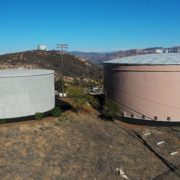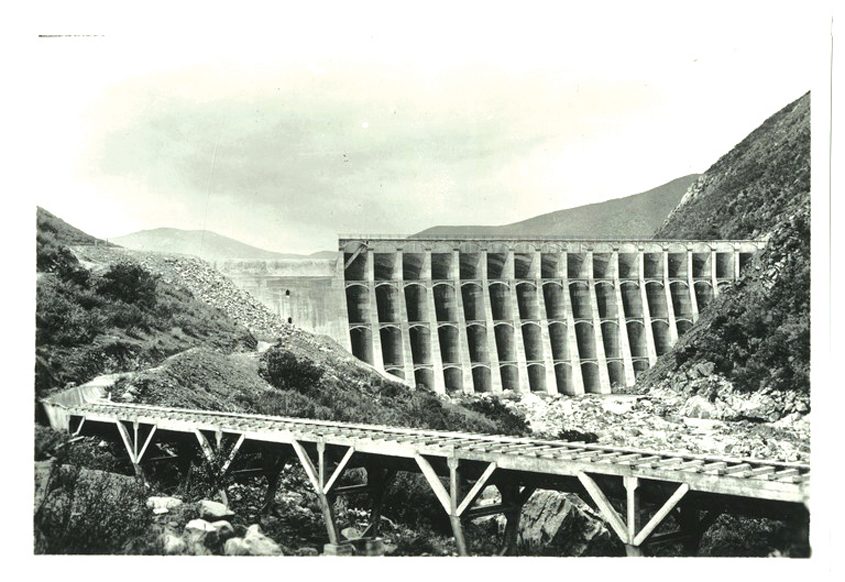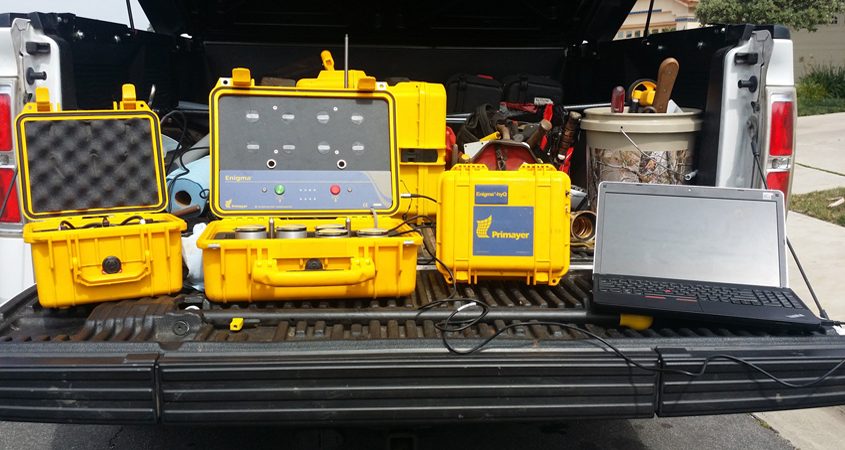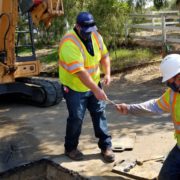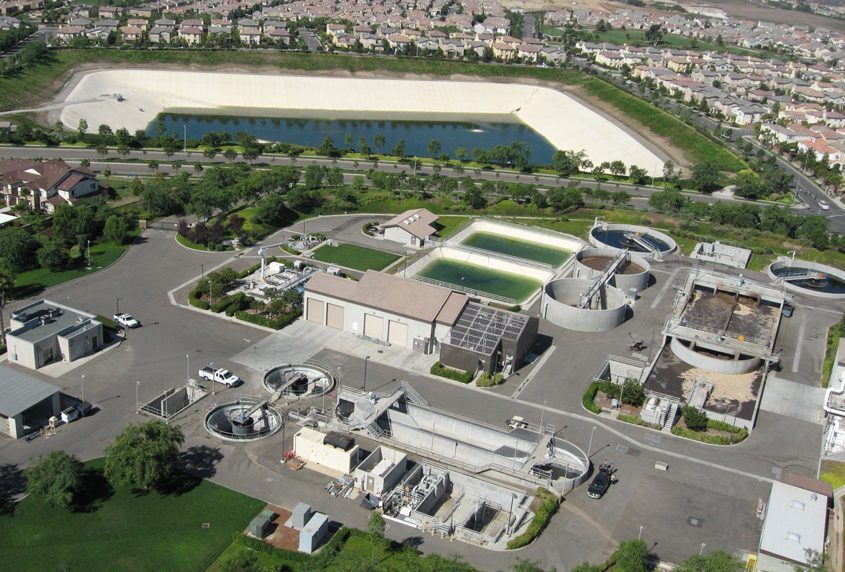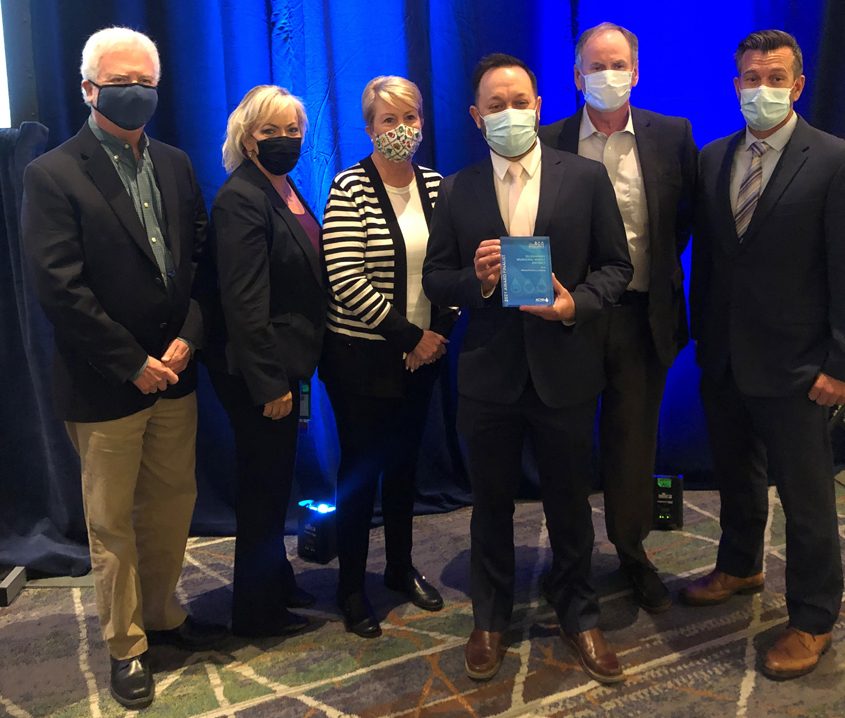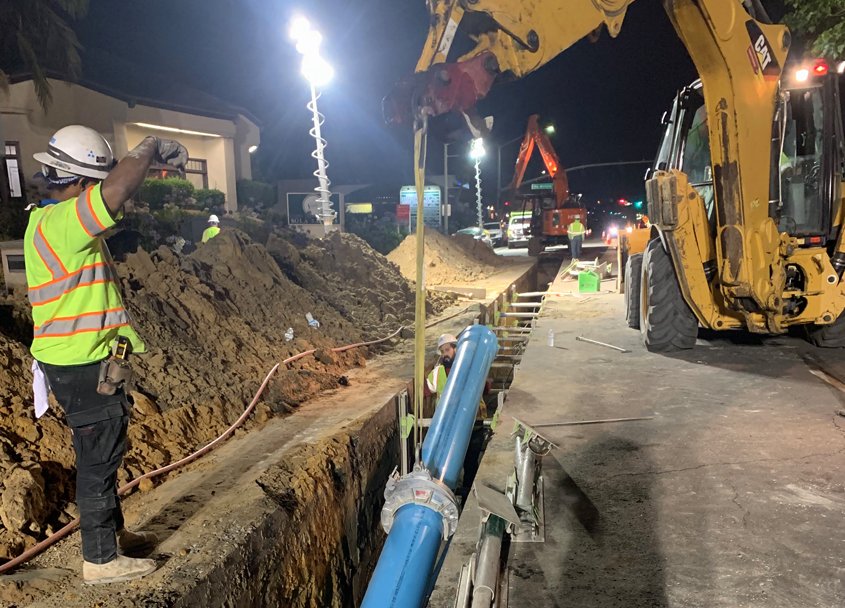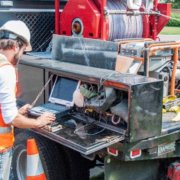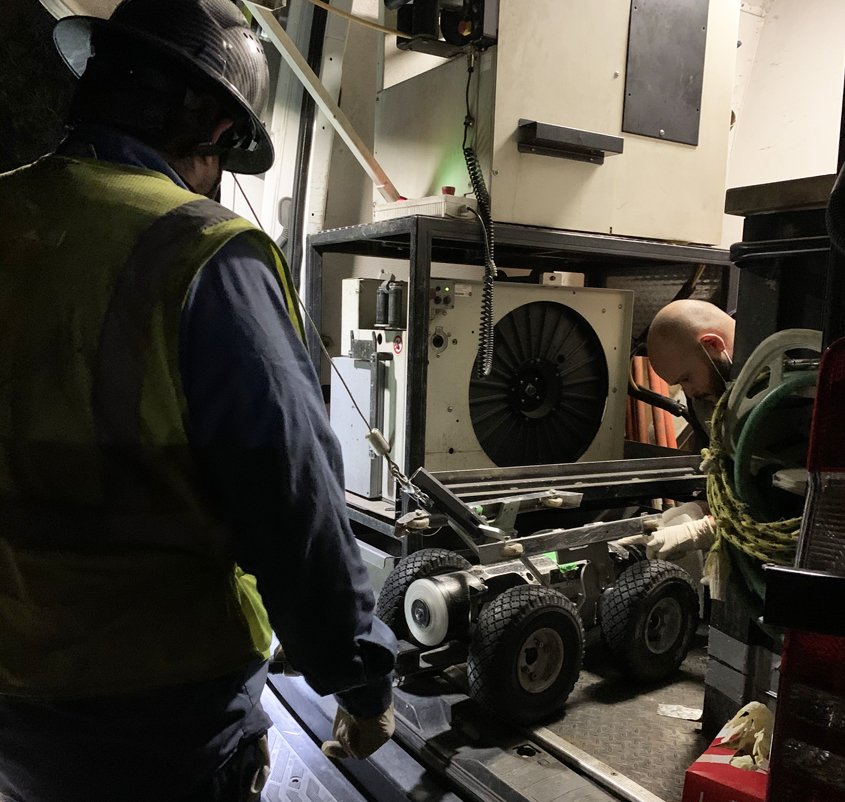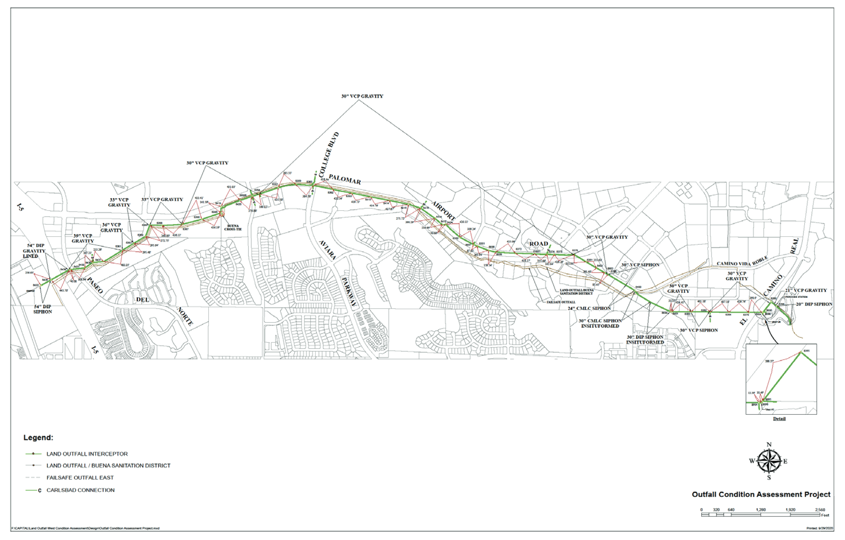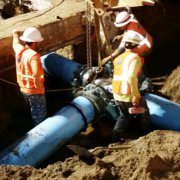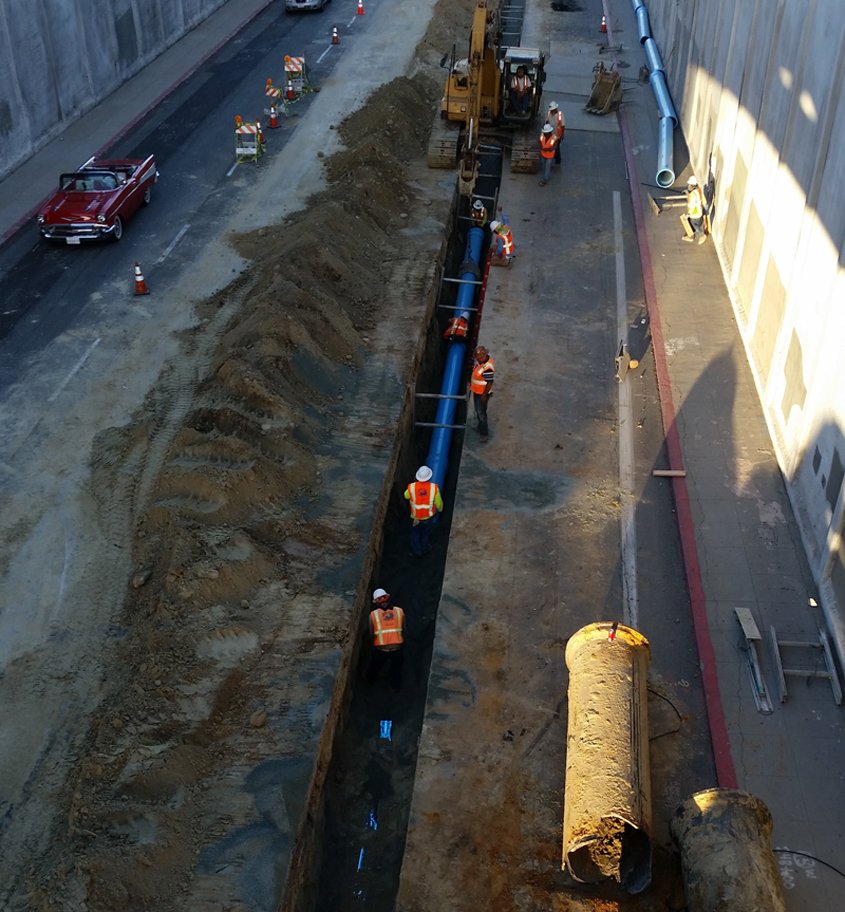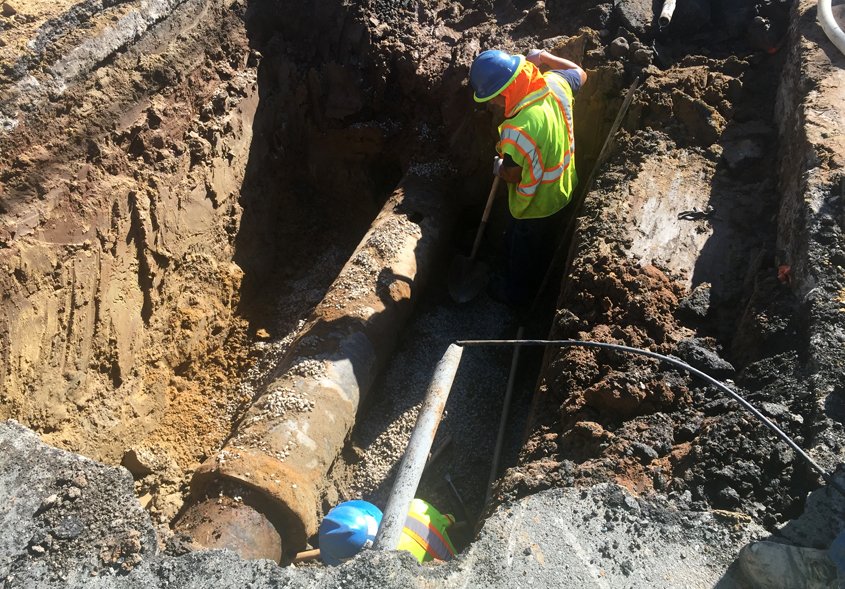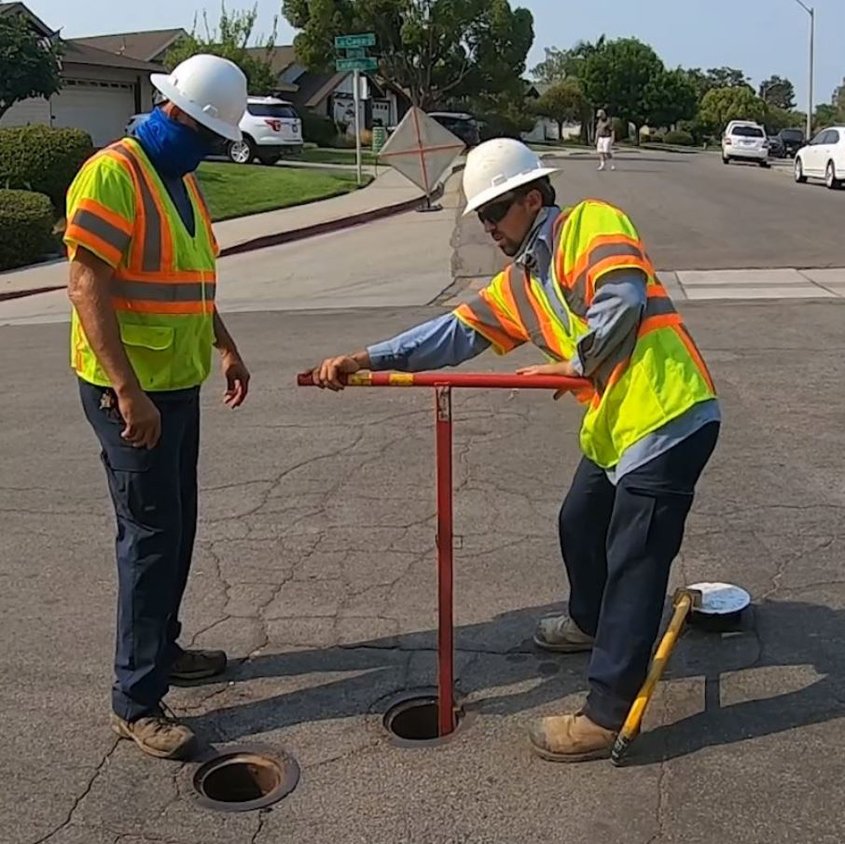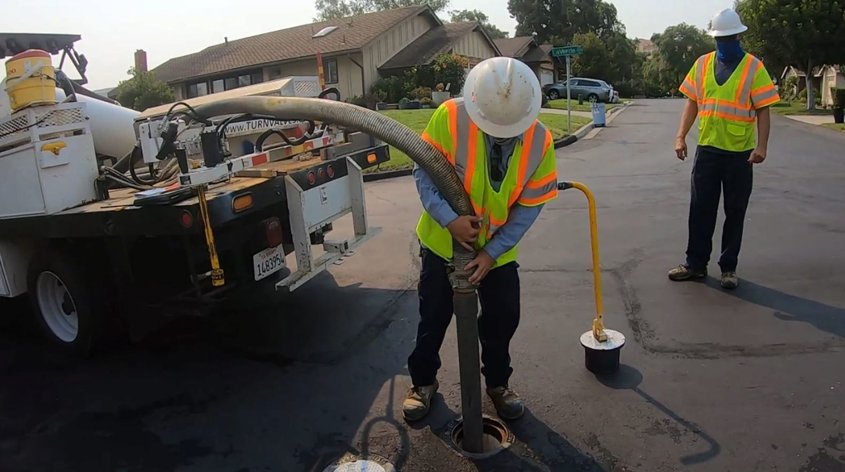Tunnel Hill Water Tanks Rehabbed and Upgraded by Helix Water District
The Helix Water District recently completed an extensive rehabilitation of its Tunnel Hill water storage tanks. The two tanks are above Interstate 8 near the Los Coches freeway exit. The tanks play an important role in the water infrastructure system by storing and providing water to thousands of Helix Water District customers in Lakeside and El Cajon.
The project took two years to complete in several phases. The first phase of the project involved stripping the exterior of the smaller and newer, reinforced concrete tank. The new, natural concrete finish does not require paint and will reduce long-term maintenance costs.
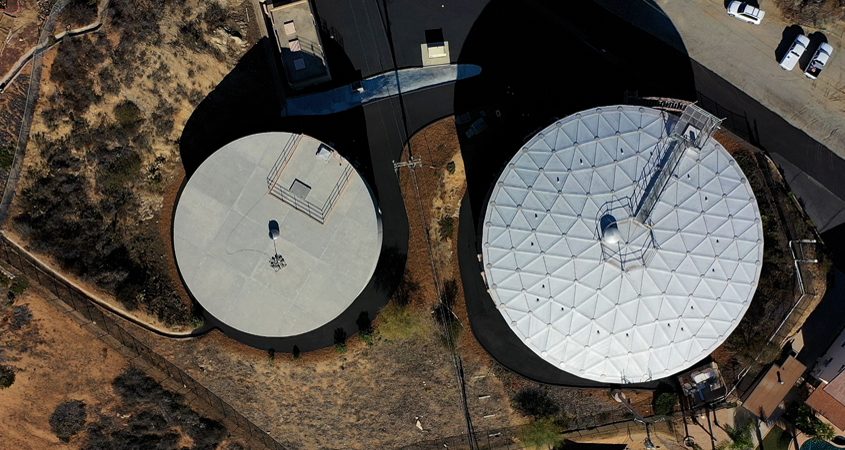
The larger steel Tunnel Hill water tank received a corrosion-resistant aluminum dome roof. Photo: Helix Water District
Next, the larger steel tank received new paint and a corrosion-resistant aluminum dome roof. The height of the tank was extended by five feet to improve the tank’s performance and safety in an earthquake, especially to protect nearby neighborhoods. The exterior of the steel tank was recoated.
Both tanks received new interior coatings to prevent corrosion and were replumbed with flexible fittings to prevent breaks and keep the tanks connected during an earthquake.
Asset Management
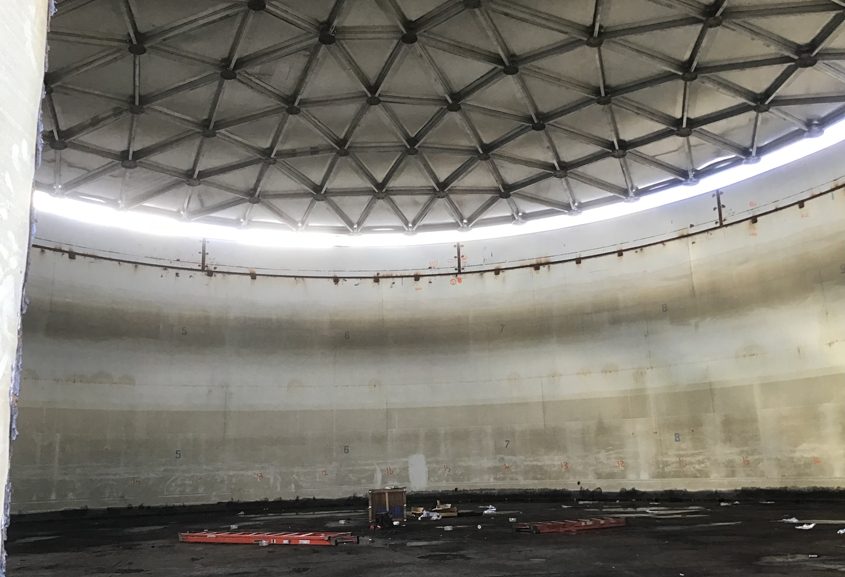
Both tanks received new interior coatings to prevent corrosion and were replumbed with flexible fittings to prevent breaks and keep the tanks connected during an earthquake. Photo: Helix Water District
“The Tunnel Hill Tank improvements are a great example of successful asset management,” said Helix Water District Board President Kathleen Coates Hedberg. “It would have cost over $10 million dollars if we had to replace the tanks. However, rehabilitating cost $3.5 million dollars. Our District is over 100 years old, and it is important to stay on top of our aging water system. We continuously monitor and manage our infrastructure because it’s the best long-term solution for our customers.”
The completed improvements will extend the life of the Tunnel Hill tanks for another 50 to 75 years.
Watch video of the Tunnel Hill Tank rehabilitation project in progress
Vital Roles In Water Infrastructure
Tanks are the most visible parts of water infrastructure and play a vital role in supplying water for the daily needs of residents and businesses, as well as for emergencies. The Helix Water District operates and maintains 25 tanks across its 50-square-mile service area. Proactive rehabilitations are less expensive than the construction of a new tank.
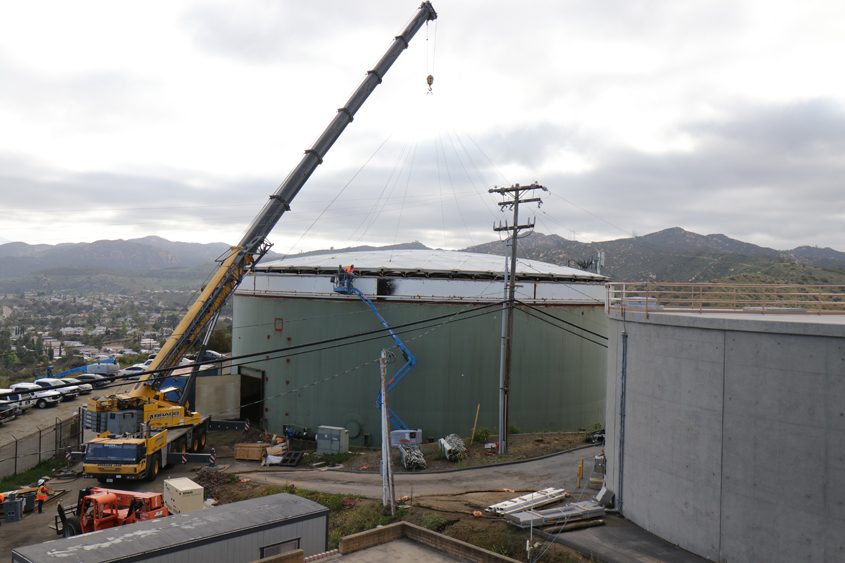
The height of the larger tank was extended by five feet to improve the tank’s performance and safety in an earthquake, especially to protect nearby neighborhoods. Photo: Helix Water District
Eight additional water storage tanks were inspected and repaired in 2022. In addition, as part of its proactive maintenance, crews replaced 11,560 feet of cast-iron pipeline and surveyed 14,728 feet of pipeline route for design.
The district pulled electromagnetic detectors through 12,000 feet of the 36-inch diameter pipeline that delivers water from the Colorado River and Northern California to the R.M. Levy Water Treatment Plant in Lakeside. The detectors measure the pipe wall and identify weak points, facilitating faster, more precise and less expensive repairs. Based on the data, the Helix Water District replaced 805 feet of pipe and installed 34 steel plates and 10 new access manways.
(Editor’s note: The Helix Water District is one of the San Diego County Water Authority’s 24 member agencies that deliver water across the San Diego County region.)

